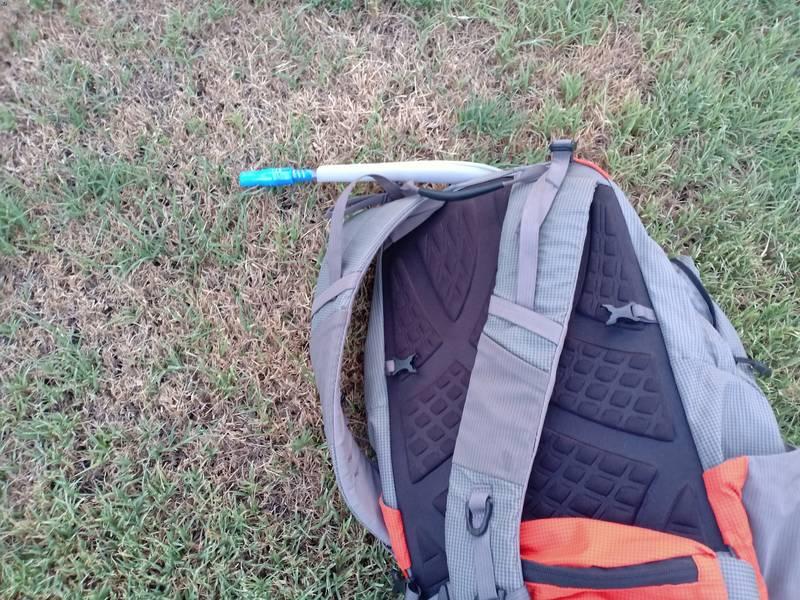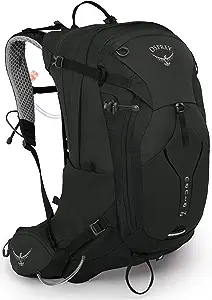Among all the outdoor essentials, water is one of the heaviest burdens to carry for hiking and backpacking or, generally, for other outdoor adventures. That, too, you cannot survive without it.
Generally, we need to drink around 4 to 5 liters of water daily, but that also varies from person to person and depends on the weather and how much effort you will put in while hiking.
Imagine if you stay on the trail for a few days, then how will you carry that much water? I am sure you understand what I am trying to highlight here. More to take for extended backpacking trips.
I take water in hydration bladders or hydration packs and soft water bottles. And I take filtration systems if I know the water availability where I will hike.
But the question here is, do you need a hydration pack? Do they work? Hydration packs are new for most people but popular among hikers, runners, cyclists, and other outdoor adventurers. Their introduction has brought much comfort for hikers due to their ease of use and ability to supply water during longer trails relative to alternatives, such as water bottles and filters.
Let’s discuss in detail whether the idea of buying a hydration pack is really worth it.
[toc]
What Are Hydration Packs?
It’s usually a backpack with a bladder or reservoir commonly made of flexible plastic or rubber, with a hose for hands-free drinking.
A valuable and unique system aimed at helping hikers maintain their hydration status in good condition and with a regular supply of water is what this hydration pack is all about.
As a matter of fact, we don’t need to stop and even slow down to take a sip of water, grab the tube of the pack, and let our hands rest. Yes, this is how effortless and painless it makes our hiking experience.
Types of Hydration Packs
Different types of hydration packs are available in the market, targeting various activities. While their function remains the same, they are designed considering the kind of activity for ease and comfort.
Specific outdoor activities and adventures require different hydration packs. Therefore, you cannot rely on one pack for cycling, snowboarding, skiing, running, and hiking.
Look at various styles of these packs to decide which one suits your personal choices and activities.
Hydration Backpacks
These backpacks look like hiking backpacks but are mainly designed to carry the water. They are available in various sizes to carry enough water for outdoor activities. These come with a hydration bladder to put the water.
Additionally, you can put your snacks and other stuff in the same pack. They can hold three times more water compared to traditional water bottles.
However, if you are a casual hiker, it may or may not be a good investment because it needs more maintenance and care.
Cycling Hydration Packs
Cycling hydration packs are specially designed for the smooth experience of a cyclist or mountain biker’s journey through challenging muddy tracks or weaving through rocky mountain tracks.
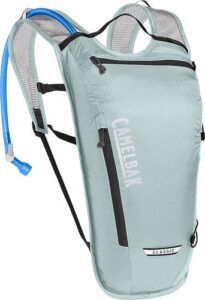
They also come with different compartments to accommodate extra gear, biking essentials, and cycling clothing on the go.
Similarly, some packs even contain a small pocket of space as a helmet holder.
Running Hydration Packs
This is another model of a hydration pack that is smaller, more compact, and designed for the runner to drink without stopping.
When you look at running hydration packs in the market, you will see that they’re categorized into backpacks and vests.
Give a shot to running vests for more intense, shorter runs. You can opt for backpacks for more water and extra storage.
Winter Sports Hydration Packs
They are new, but winter sports hydration packs exist. They are specially insulated to prevent water from freezing, thus suitable for riders who travel to snowy areas.
In snowy weather conditions where water instantly becomes ice due to unbearable cold, the rugged design of this pack helps keep the tube completely ice-free using hose covers.
Hydration Waistpacks
Another well-known kind is the hydration waist pack. If you’re not planning to run distances above 3 hours, consider choosing a waist pack rather than a hydration pack.
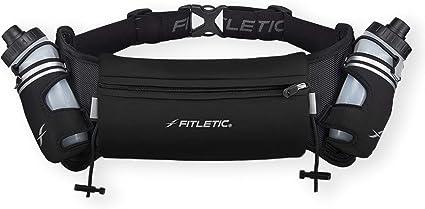
With this pack, we have the liberty to carry some nutrition and enough hydration all day long. You’ll notice that people hiking for shorter distances prefer waist packs to keep their shoulders free and relaxed.
The good news is that their adjustable straps also ensure a super comfortable fit and hands-free drinking.
Benefits of Hydration Packs
Here are the advantages of having a hydration pack.
Ease of Drinking
With a quality hydration pack, you don’t have to take off your bag to sit and drink water. Hydration packs offer a hand-free trekking experience. They provide convenient access to water by allowing to drink on the go, unlike water bottles.
Even when you put a bottle in the side pocket of your backpack, it’s a daunting task to put it back over again.
Weight Distribution
Unlike water bottles, these packs distribute the weight evenly on the back to enhance overall endurance. This is crucial when you are on tough and rugged terrains for a few days trekking.
More Water Capacity
The water capacity of the bladder is the foremost factor to consider. Typically, the bladders vary in size from almost 1.5 – 3 liters.
Choosing a bigger pack is worth it if you’re planning a long day trip. This large capacity advantage is especially cherished during intense activities or long hikes when you need more water.
Cons of Hydration Packs
Difficult to Refill
Despite the top-notch features of hydration packs, they can be hard to refill sometimes, depending on the design of the bladder.
It is especially possible when you go to remote areas where water access is rare and limited. And in some packs, water bladders are often tucked away in the bag, restricting refilling.
Hard to Maintain
All hydration packs are more challenging to clean and maintain than classic water bottles. If you drink so often, you will be cleaning the pack frequently.
Having said that, water also spills while filling the bladder, no matter how high-quality materials have been used in its manufacturing.
Moreover, the drinking tube also requires maintenance on and off without any negligence.
Don’t Know How Much Water Left
Without a doubt, transparent water bottles clearly show how much water is remaining. However, it can be a hard nut to crack to examine how much water is there in hydration packs as we can’t see it.
That said, this uncertainty can be highly problematic and leave you unsure about when to refill the reservoir again.
Hydration Packs Alternative Options
Before concluding, let’s discuss the alternative options for carrying the water.
Water Bottle
Water bottles are the most affordable and common option for instant hydration. They come in various shapes (and sizes) and are made of stainless steel, glass, and plastic. But it’s not easier to carry additional water in bottles.
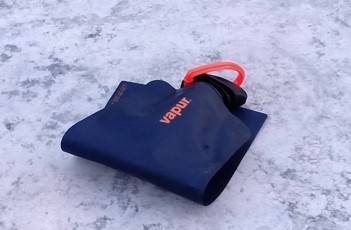
In addition, it can make our movement difficult because of its less handy nature. However, if you know that water is available on the trail and you can refill the bottle, then it’s actually a handy option. You can simply filter the water and fill the bottle on the trail.
We normally prefer to carry a collapsible water bottle instead of a hard bottle on backpacking trips to save space.
Is a hydration pack better than a bottle? Yes, it is if you want to carry more water efficiently for a longer trail with even weight distribution and ease of drinking.
Water Bladders
Another alternative option we can consider is a hydration bladder. These can provide real benefits for hikers, particularly in dry conditions.
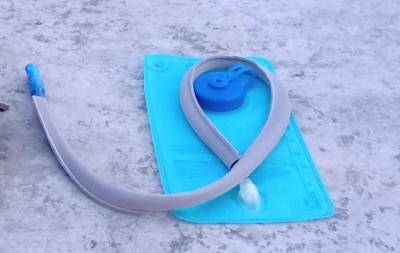
Bladders are good to go if you’ve so much distance to cover and the weather is super hot. Consequently, this will allow you to carry large water quantities to overcome dehydration.
Make sure you choose a water bladder that exactly fits in your daypack or backpack. Most of the backpacks come with hydration bladder compatibility.
Water Filters
Water filters or purifiers are perfect for outdoor enthusiasts. Water filters are typically easy to use, lightweight, and compact, and this is what makes them super preferable.
Know that they might not be effective against heavy metals (chemicals) and need proper maintenance when required.
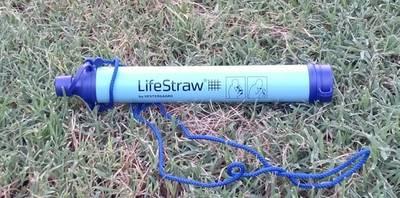
We always carry them in our backpacks when we are sure that we will find natural water resources outdoors.
Summary: Are Hydration Packs Worth It?
Yes, hydration packs are worth it if you plan to stay longer(more than 10km) on the trail for ease of drinking, weight balance, and more water storage. Hydration packs are undoubtedly great for long hikes and tough terrains, and y’all will agree with that once you start using them.
They are absolutely worth it because of their comfortable nature. You can sip water quickly, even while running or climbing a hill. In the end, it all comes down to your personal choice and what you’re looking for.
What we suggest is that you should definitely try hydro packs if you’re a regular hiker. Otherwise, you can stick to water bottles or any other convenient choice if you don’t go for outings so often. You should test and experience what’s best for you, as it takes time for every outdoor lover to get used to things and their importance.
